 Though unable to fly three-week old hawk owlets are ready to make the leap.
Though unable to fly three-week old hawk owlets are ready to make the leap.
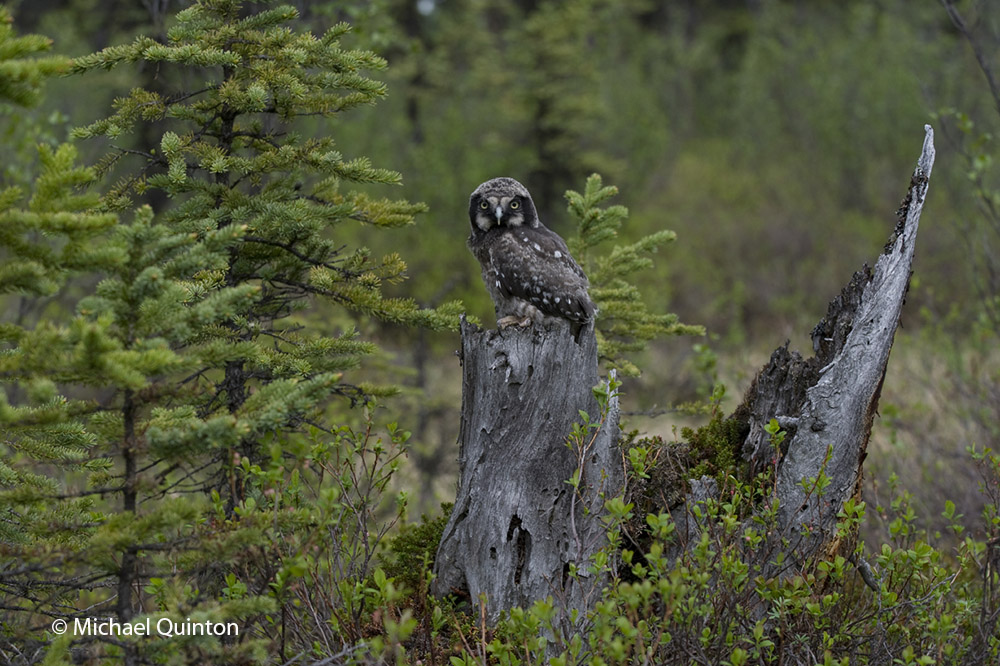 For young hawk owls the ground is a dangerous place. Continue reading
For young hawk owls the ground is a dangerous place. Continue reading

 Though unable to fly three-week old hawk owlets are ready to make the leap.
Though unable to fly three-week old hawk owlets are ready to make the leap.
 For young hawk owls the ground is a dangerous place. Continue reading
For young hawk owls the ground is a dangerous place. Continue reading
 A northern hawk owl perched atop a dead, black spruce overlooking its preferred hunting grounds, an Alaskan muskeg wetland.
A northern hawk owl perched atop a dead, black spruce overlooking its preferred hunting grounds, an Alaskan muskeg wetland.
The northern hawk owl is named after its hawk-like hunting behavior. Like hawks, the hawk owl hunts by day using its keen eyesight to spot small birds and mammals. The red-backed vole is by far the most important prey species. But the hawk owl is an opportunist and other species of voles and several species of shrews are also caught. During those years when snowshoe hares are plentiful, hawk owls will add these much larger prey species to their list, as will many species of birds from the tiny, common red-poll to birds up to the size of ptarmigan. Continue reading
BY DAY
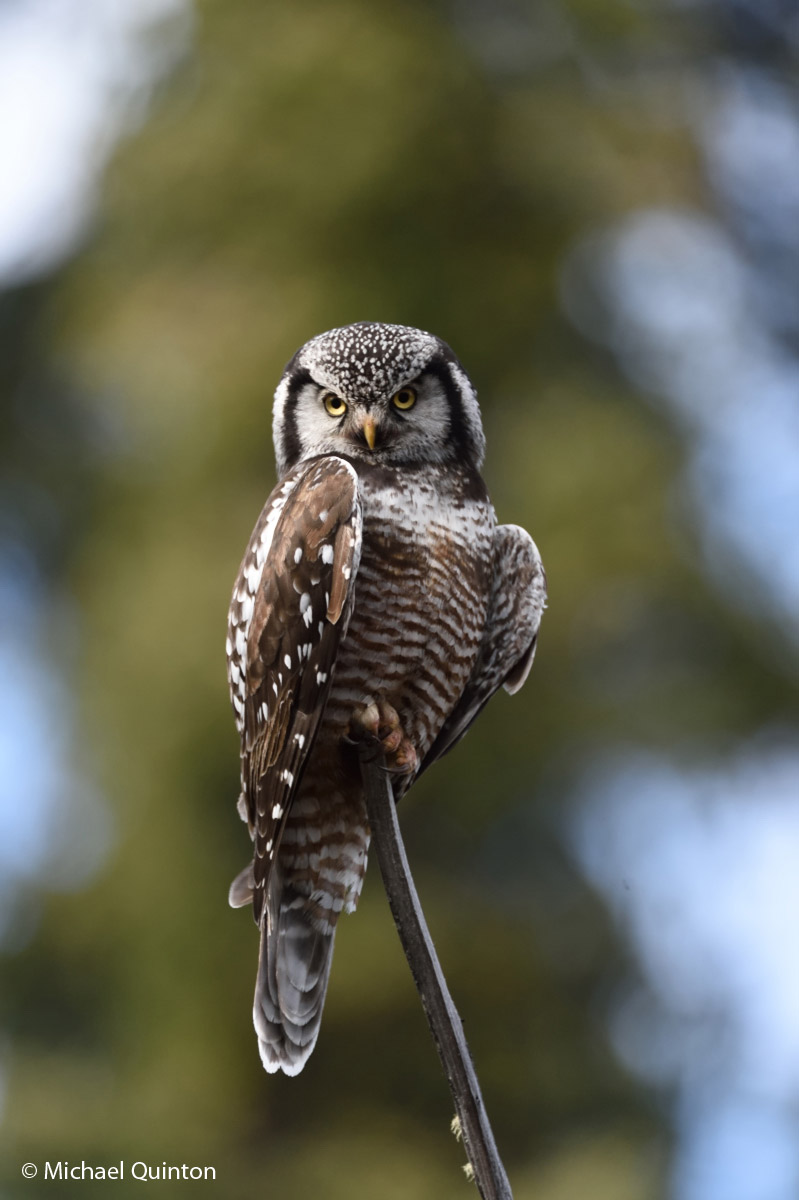 Adult male northern hawk owl is active during the day.
Adult male northern hawk owl is active during the day.
For a few weeks I have been photographing a pair of northern hawk owls that have nested in a stand of tall white spruce. Hawk owl populations are cyclic and for the past three years they have been rare in my part Alaskan interior. Over the past twenty years, I have been trying to capture their little known life history. In those twenty years I have found only six or seven active nests. Continue reading
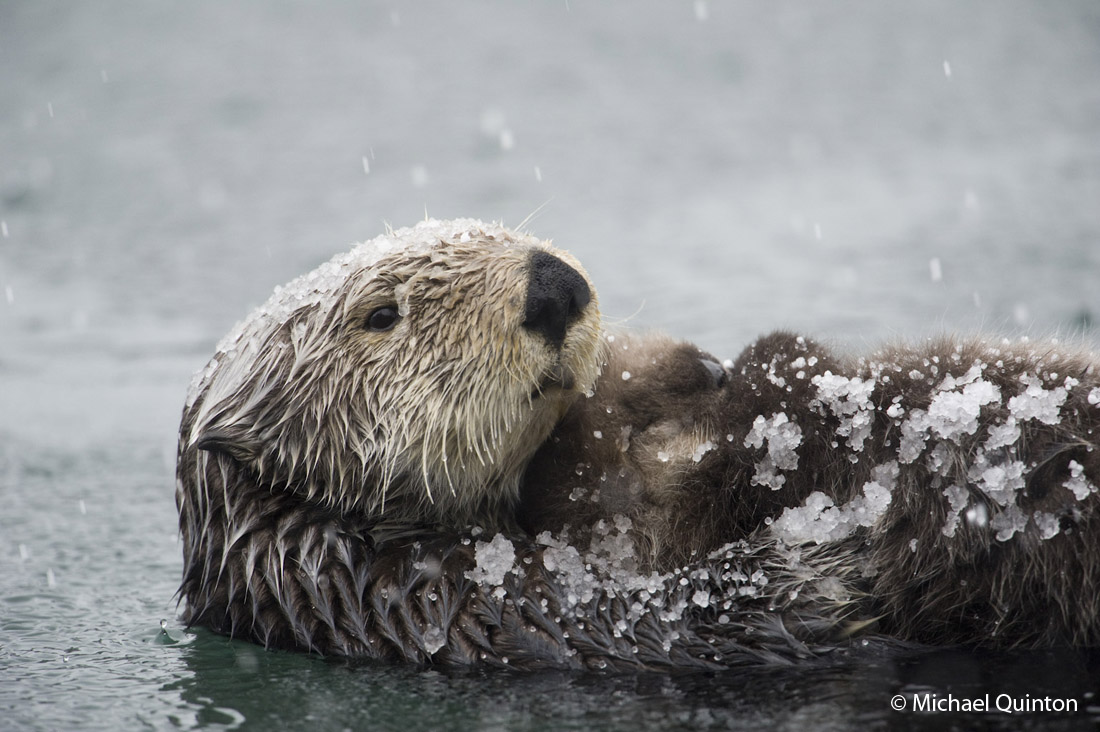 Mother sea otter snuggles her snoozing pup.
Mother sea otter snuggles her snoozing pup.
On a recent trip to photograph humpback whales in Alaska coastal waters my plans were foiled because of bad weather. High winds kept our small boat in the harbor. But these same winds presented an unexpected photo opportunity. Rough seas brought a couple dozen sea otters to a small protected bay for shelter from the storm. At first the sea otters were shy and stayed out of reach of my telephoto lens. But by hanging out in plain sight for hours each day they grew used my presence and would sometimes drift in close enough for photographs. Continue reading
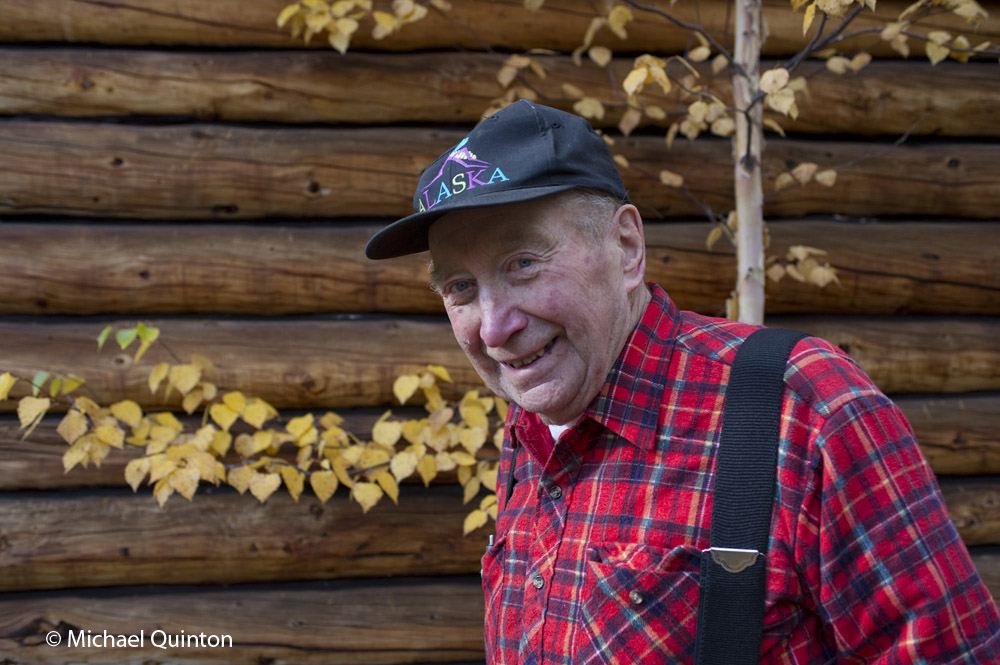 Fred Rungee at his cabin in September 2011.
Fred Rungee at his cabin in September 2011.
Fred Rungee, everyone’s favorite mountain man in these parts, passed away on March 27, 2015 after spending more than 70 years in the Alaskan wilderness. He was ninety-three. After retiring from the BLM as a fire management officer, he moved to a remote valley near Slana, Alaska and built a cabin. His cabin, “a short two and a half mile hike up the creek and then another half mile of side-hilling along the lake”, kept Fred fit and ever young at heart.
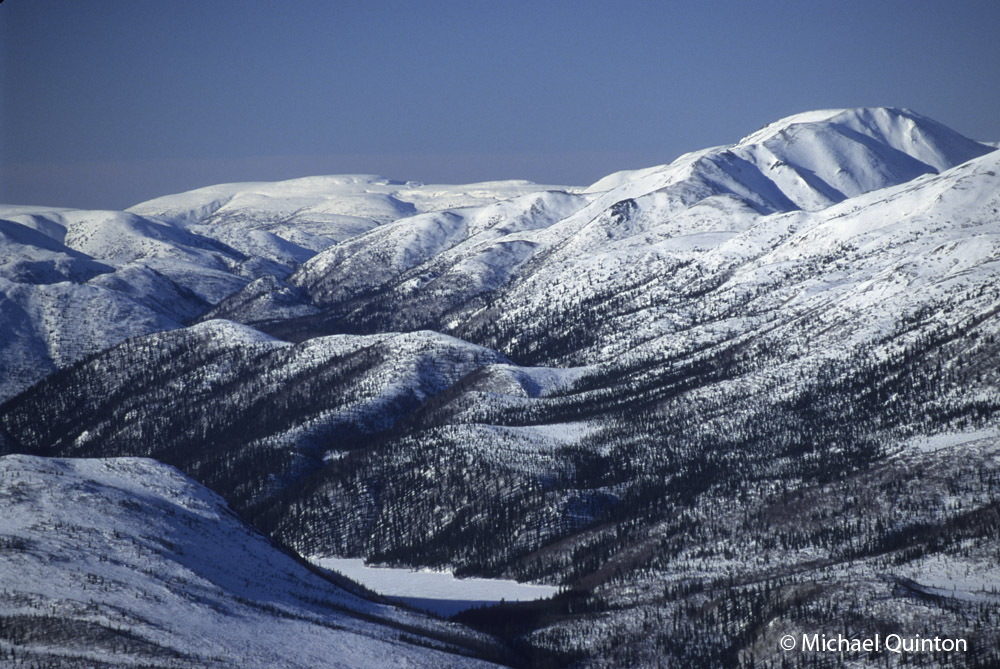 Fred’s beloved Lake in winter. He loved the solitude of those long winter months.
Fred’s beloved Lake in winter. He loved the solitude of those long winter months.
 Fred’s’ cabin, perched on a bench of bedrock overlooking a wilderness lake, is bear-proof and beautiful.
Fred’s’ cabin, perched on a bench of bedrock overlooking a wilderness lake, is bear-proof and beautiful.
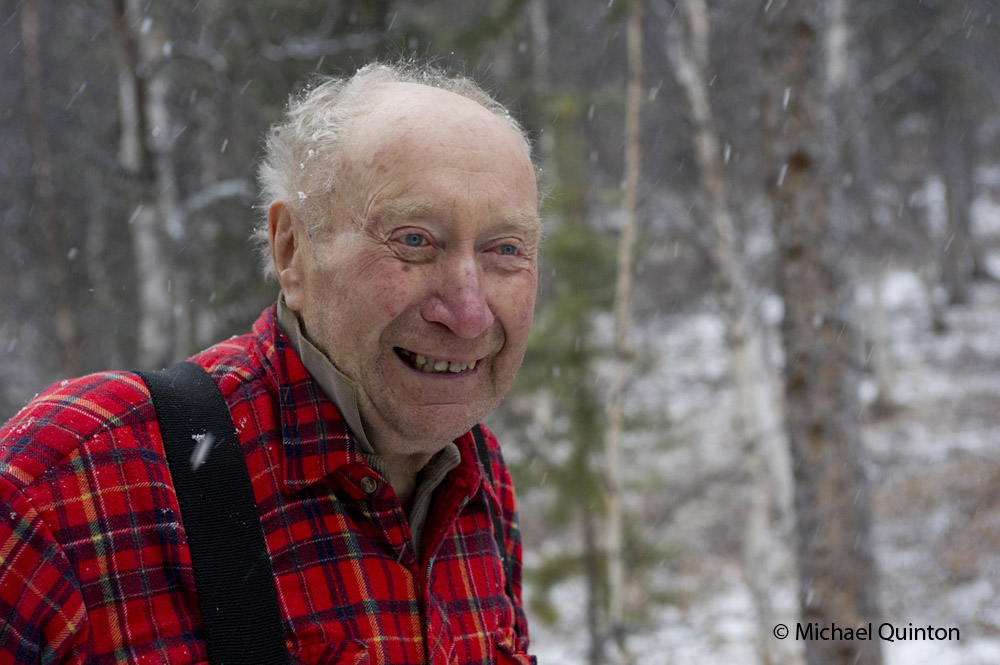 One of Fred’s’ final days at his wilderness cabin.
One of Fred’s’ final days at his wilderness cabin.
The old cross-cut saw kept the bears out of a small outbuilding.
Fred’s bear story. To listen to the audio clip, click on left side of the bar. Volume on right side.
Fred loved his gray jays.
Walking the trail near his cabin.
“Sit down and have something to eat.” Guests were always welcomed with a bite to eat. Living mostly out of tins of food, Fred claimed to have “traveled several miles” around the tops of those tin cans with a can opener.
Farewell Fred.
Red squirrel has cached black spruce cones in an old flicker hole.
RED SQUIRREL
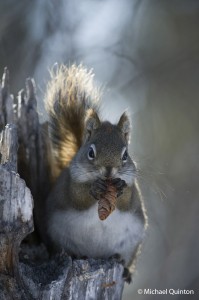 I am still on my backyard safari. This is where I do some of my favorite work. I have had professional photographers scoff at the mere suggestion of doing in-depth work with such “insignificant” species as the red squirrels, voles and the like. But I happen to enjoy photographing all species of wildlife including red squirrels. The idea of a backyard safari is to give one the incentive to compile a complete coverage of the wildlife in your immediate surroundings as well as gaining experience turning photographic potential into great photographs.
I am still on my backyard safari. This is where I do some of my favorite work. I have had professional photographers scoff at the mere suggestion of doing in-depth work with such “insignificant” species as the red squirrels, voles and the like. But I happen to enjoy photographing all species of wildlife including red squirrels. The idea of a backyard safari is to give one the incentive to compile a complete coverage of the wildlife in your immediate surroundings as well as gaining experience turning photographic potential into great photographs.
Red squirrel pry the scales off a spruce cone and feeds on the tiny seeds.
The red squirrel jumping straight on is a tough one. I found a place where the squirrel routinely jumps form one branch to another. The distance is just over three feet and it takes less than a second. The problem lies in the tiny amount of depth of field with the 560 mm telephoto lens. I use a Nikon 200-400 lens with a 1.4 tele-extender and pre-focus at about 4 meters. There is less than one inch that will be in sharp focus. I manage to get off about three frames each time the squirrel jumps and only about one in fifty photos will be in focus. What that boils down to is about one photo every four days will be a keeper. I could increase the percent of successful shots by adding a trigger which trips the shutter as the squirrel crosses a beam of infra-red light. Maybe next week.
TRACKS
One of the few sets of snowshoe hare tracks I have seen in the backyard this winter. They are currently at the low-end of their population cycle.
BOREAL OWL
The male boreal owl is still calling from the flicker holes but not every night. I suspect he is also singing his territorial songs from other possible nesting sites in the area.
The male boreal owl begins his territorial songs just before dark.
AURORA BOREALIS
The aurora borealis usually begins with a band of green, glowing light in the northeast.
Aurora begins to dance.
Aurora borealis dancing over our little homestead
.All week I have been on safari, backyard safari that is, trying to sniff out a few photographs. I continue working with the pine grosbeaks and red squirrels but they have proven tough subjects. Yes even squirrels can be very challenging especially when you try for something new. Last night a fantastic aurora show kept me busy for a few hours after midnight. The unexpected beauty made up for those frustrating red squirrels.
For the past couple weeks a boreal owl has been singing after dark. I had developed this situation by placing a couple of ladders within camera range of his singing posts. He sings his territorial song while sitting at the entrance of a couple of old northern flicker nesting cavities. On top of the ladders, I mounted ball heads so I could climb and place my telephoto lens and flash bracket quickly and quietly. As I photographed the aurora borealis the boreal owl was singing from both of the flicker cavities. During lulls in the aurora activity, I approached the cavities to see what was going on. At one cavity there was no owl at the hole and I could hear the male singing from the other cavity. Just for fun I scratched the tree trunk and to my surprise the head of a boreal owl emerged. There were two boreal owls! The male had attracted a mate. That was exciting news. Perhaps they would choose one of the cavities for their nest.
Male boreal owl stares out from the northern flicker cavity.
Boreal chickadee
Ever feel like going on a safari but just can’t get away? Well, take a safari in your own back yard. Here you’re the expert. You know the terrain and what to expect. And believe it or not everyone can benefit from this little exercise. In fact, even with the smallest back yard, some amazing and beautiful images can be made. I regularly take a backyard safari.
Pine grosbeak
My Big Backyard
I bet my back yard is bigger and wilder than yours! Our ten acres of northern boreal forest borders Wrangell/St. Elias National Park, Alaska, our largest National Park. My back yard stretches south for a couple hundred miles through the wilderness of Alaska. We have had grizzlies, wolves, red fox, lynx, great gray owls, nesting hawk owls, bald eagles, golden eagles, willow ptarmigan, great horned owls, sharp-tailed grouse, boreal owls, marten, caribou, Alaskan moose and much more on out little ten acre homestead. But still it is usually a difficult challenge to photograph the local wildlife . Nothing comes easy.
Red squirrel
Developing Photo Potential
Getting the most out of your backyard safari is the same as any photo trip. In fact your own backyard offers the best opportunity to learn to develop photographic potential. And, there is no better place to gain valuable experience in finding solutions to photographic problems we all encounter in the field.
Look for a unique perspective.
Create feeding stations for birds and squirrels.
Take the time to let wildlife become used to your presence.
Build a blind if you have shy wildlife species.
Red squirrel jumping
Pine grosbeak
Month after month of white, gray, blue and green of the cold interior Alaskan winters leaves me wishing for warmer hues. Fortunately warmer colors in winter are out there, if you look close enough.
The common red poll adds a tiny touch of color to the long Alaskan winter.
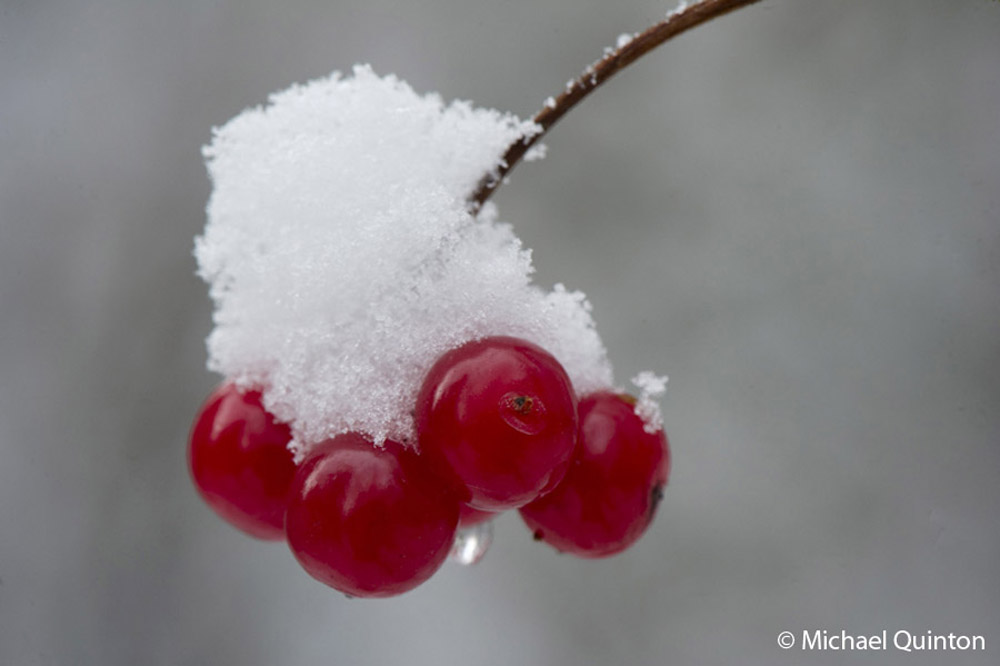 The fruit of the high-bush cranberry seems to be to winter resistant.
The fruit of the high-bush cranberry seems to be to winter resistant.
Winter sun sets.
This week there were a couple of expert mousers hanging out at my place. Actually there are no mice here, but lots of red-backed voles. As vole hunters go, nothing can match the tiny short-tailed weasel or ermine. Continue reading